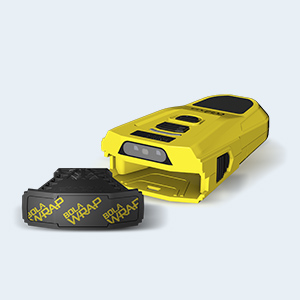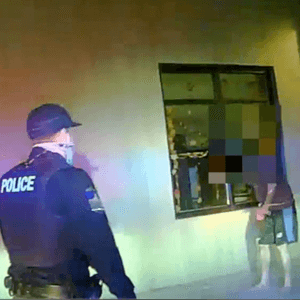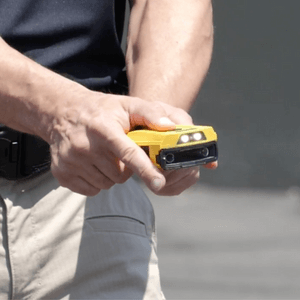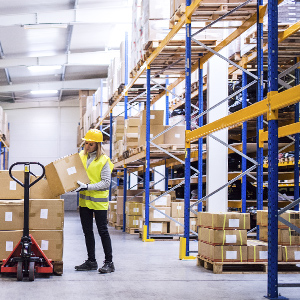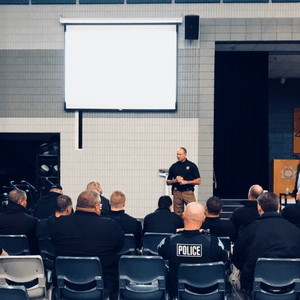FAQs
Frequently Asked Questions
Who is WRAP Technologies?
WRAP Technologies (Nasdaq: WRAP) is a global leader in innovative public safety technologies and services. We develop creative solutions to complex issues and empower public safety officials to safely protect and effectively serve their communities through our portfolio of advanced technology and superior training solutions.
WRAP’s BolaWrap® Remote Restraint device is a patented, hand-held pre-escalation and remote restraint device that discharges a Kevlar® tether to temporarily restrain uncooperative suspects and persons in crisis from a distance. Through its many field uses and growing adoption by agencies across the globe, BolaWrap is proving to be an effective tool to safely detain persons without injury or the need to use higher levels of force.
WRAP Reality, the Company’s virtual reality training system, is a fully immersive training simulator and comprehensive public safety training platform providing first responders with the discipline and practice in methods of de-escalation, conflict resolution, and use-of-force to better perform in the field.
WRAP’s headquarters are in Tempe, Arizona.
What is the BolaWrap?
The BolaWrap® remote restraint device is a patented, hand-held pre-escalation apprehension tool for police that discharges a Kevlar® cord to restrain uncooperative suspects or nonresponsive persons in crisis from a distance.
The BolaWrap’s surprising sound and ability to restrict an individual’s movement buys officers time and makes it safer for them to approach and gain control of individuals.
Situations between officers and uncooperative individuals are usually chaotic, and officers don’t have many effective options to handle them. Instead of waiting for an encounter to unfold and escalate, the use of the BolaWrap can effectuate an arrest quickly, safely and humanely - ending the situation and facilitating a positive outcome that doesn’t result in injury or use of force.
What is De-escalation and Use of Force?
When encountering a subject who must be detained, officers are faced with the daunting task of de-escalating the situation (according to De-escalation Techniques, de-escalation is the act of moving from a state of high tension to a state of reduced tension) and taking the subject into custody without injury to the subject, the officer, or bystanders.
In general, the amount of resistance an officer faces from a noncompliant subject will determine the amount of force the officer will be allowed to use in order to achieve compliance from the subject.
According to the National Institute of Justice, use of force can be defined as the "amount of effort required by police to compel compliance by an unwilling subject". The various levels of force that an officer can use is referred to as the Use of Force Continuum.
Verbal commands exist on the very low end of the Use of Force Continuum, while the use of deadly force exists on the very high end.
BolaWrap is considered by law enforcement to be positioned on the low end of the Use of Force Continuum.
How do police officers deal with subjects who pose a threat but refuse to comply with officer commands?
Police officers today are the de-facto social services for communities in crisis.
Police officers are constantly faced with noncompliant subjects who are either experiencing a mental health crisis, are in a drug induced psychosis, or in some state of being that disables them from being able to respond or comply to the commands of an officer.
These noncompliant subjects often pose a serious threat to themselves, others, or the officers, and they must be detained.
The use of higher levels of force may lead to serious injury or death. Although the use of higher levels of force may be warranted and justified, the optics are often not understood and do not present a positive image of law enforcement.
If de-escalation tactics are not successful on a mentally ill or drug impaired subject, and the subject poses a serious threat to him/herself or others, law enforcement agencies and officers are faced with a perilous choice of which pain compliance tool to use to subdue and control the subject.
This quandary has resulted in the De-policing Phenomena - 76% of police officers say they are more reluctant to use force when appropriate out of fear of negative optics.
According to the Treatment Advocacy Center, more than 1 in 10 police encounters involve mentally ill subjects, and 1 in 4 fatal police encounters involve mentally ill subjects.
Eric Adams, Brooklyn Borough President and retired NYPD Police Captain recently said, “Every four minutes in the city [NYC], there is a call for an emotionally disturbed person (EDP).”
Sheriff Jim Hart of Santa Cruz County recently stated, “Deputies respond 10 times a day to people experiencing serious mental health crises, which translates to roughly 3,000 responses annually.”
The BolaWrap is intended to serve as an additional tool to help officers safely restrain subjects who are not complying, without having to resort to the use of higher levels of force.
For a comprehensive report on Refining the Role of Less-Lethal Technologies, by the Police Executive Research Forum, click here.
In which situations should the BolaWrap be used?
BolaWrap was designed to be used on non-compliant subjects who need to be detained but are not responding to verbal commands of officers. Before an encounter escalates to a point where lethal force is needed to be used, the BolaWrap can be deployed to help safely restrain a subject from a distance, without relying on inflicting pain to gain compliance.
Ultimately, each law enforcement or military agency creates their own policy and procedures for their agency to determine when the BolaWrap should be used by their agency.
Wrap suggests the following scenarios for when BolaWrap deployment should be used:
- Emotionally Disturbed Persons (EDP)
- Passively resistant and non-compliant subjects
- Mildly aggressive non-compliant subjects
- Mentally ill subjects
- Suicidal subjects/Persons in crisis
- Subjects under the influence of alcohol and drugs
- Armed (not with a firearm), non-assaultive, non-compliant, non-mobile
- SWAT operations
Has the BolaWrap been used on any subjects in real life?
The BolaWrap has been used on subjects in the field dozens times by various law enforcement agencies across the United States.
In many instances, the mere presence of the BolaWrap’s green line laser was enough to motivate the subject to comply.
In other instances, the BolaWrap was deployed to successfully wrap and de-escalate the encounter, enabling the officer to take the subject into custody without harm to the subject, the officer, or others.
The shock factor created by the sudden wrap and the loud sound of the BolaWrap being deployed greatly assisted in the de-escalation of many encounters.
To view bodycam videos of the BolaWrap in action, please visit wrap.com/bodycam.
How many police departments are carrying the BolaWrap?
More than 500 police agencies throughout the United States have BolaWrap devices, with many more agencies currently in the process of training and writing policies for their department.
WRAP has a robust nationwide distributor network to support the company’s distribution of the BolaWrap in the United States, with 14 US distributors covering 50 states.
Is the BolaWrap being used internationally?
WRAP has delivered BolaWrap products to 44 different countries thus far. Each country is in various stages of either testing or carrying the BolaWrap.
WRAP has more than 30 international distributors to facilitate global distribution, with more export licenses and distributors in the process of being signed.
Are Human Rights Organizations supportive of the BolaWrap’s implementation?
Activist Redditt Hudson, Chairman of the Board of The Ethics Project and Regional Field Director of the the National Association for the Advancement of Colored People said about the BolaWrap, “Anytime you can have a more humane response to someone in crisis, it’s not only good for the department, it’s good for society."
The community sees the BolaWrap as a low-level force option that is not intended to cause pain to achieve compliance from a subject in mental crisis. De-escalation tactics and mental health training isn’t always enough when dealing with subjects in mental crisis who pose serious threats to themselves or others. With the BolaWrap, officers can safely restrain and detain subjects without risking serious injury to the subject, as would be the case were higher levels of force to be used.
Is the BolaWrap dangerous?
The BolaWrap does not depend on pain or injury to be effective and is not designed to be a less than lethal weapon or pain compliance tool. Other devices on an officer’s duty belt intend to inflict pain in order to gain a subject’s compliance (i.e. batons, pepper spray, electrical weapons, guns, etc.).
Similar to handcuffs, the BolaWrap is a restraint device designed to restrict the movement of a subject’s legs or arms, and does not intend to inflict pain in order to achieve compliance.
If a subject is not wearing clothing, the BolaWrap can still wrap and the small hooks at the end of the tether may penetrate into a subject’s skin.
Regarding the potential for a neck wrap, BolaWrap has a green line laser for precise accuracy, and officers are trained not to deploy the BolaWrap above the elbow area of the subject.
What if the subject is running, will the BolaWrap still be used and will it work?
Although the likelihood of a successful wrap may decrease if a subject is running, the BolaWrap can still be effective and potentially wrap subject’s legs who are running.
Each agency creates their own policies and procedures to determine in which scenarios the BolaWrap should be used.
How is the gunshot-like sound emitted by deploying the BolaWrap helpful during real life scenarios?
Diversionary devices are commonly used by law enforcement as a tool to distract a subject. The sound of the BolaWrap deployment will surprise a subject and distract their attention providing officers with vital seconds to put their plan into place to safely take the suspect into custody
In use cases thus far, the sound has proven to de-escalate the encounter by causing the subject to submit to the officer.
How is the BolaWrap carried? Is there enough space on the police officer’s duty belt to carry the BolaWrap?
There is only so much real estate on an officer’s duty belt. In many agencies across the United States, some less-lethal tools on the belt have proven to be ineffective and are therefore being removed from the belt.
WRAP offers a variety of holster options to make it easy for officers to carry the BolaWrap, including a Kydex Holster, a Dual Retention Holster, a Nylon Thigh Rig, and a Nylon Condor.
What does the training for the BolaWrap consist of?
The Wrap Training Academy provides instructor level training for the BolaWrap remote restraint. The 5-hour course consists of both classroom learning and practical exercises to certify instructors to instruct BolaWrap operators for a period of two years. For more information or to request training for your department, please visit the Wrap Training Academy portal or contact the Training Team at training@wrap.com.
Is the BolaWrap expensive?
The BolaWrap is well-priced relative to other less-lethal tools. The actual price depends on a variety of factors including order quantity and customer location. Please request a quote for specific pricing information for your department.
Who invented the BolaWrap?
BolaWrap was invented by WRAP's Chief Technologies Officer, Elwood G. "Woody" Norris.
Woody is an award-winning American inventor and author of more than 80 U.S. patents, primarily in the fields of electrical and acoustical engineering. Woody was the winner of the 2005 Lemelson-MIT Prize for his invention of a "hypersonic sound" system which allows sound to be focused with high precision - a technology currently used in re-directional sound weapons by the military.
For more information on Woody, please visit https://wrap.com/about/.
Can the public or private security companies purchase the BolaWrap?
WRAP continues to receive countless requests to purchase the BolaWrap by individuals, private security, bail bondsman, fugitive recovery agents, mental health institutions, places of worship, and schoolteachers.
BolaWrap is currently only available to law enforcement and military agencies. However, the company does anticipate making the BolaWrap available to other professionals in the future.
How can I invest in WRAP Technologies?
WRAP Technologies is a publicly traded company listed on the Nasdaq Stock Exchange under the stock symbol WRAP, with almost $40 million raised as of 2020 and a market cap of ~$250 million.
For more investor information, please review our Investor Deck.
For all further investor related questions, please contact Investor Relations at IR@wrap.com.


